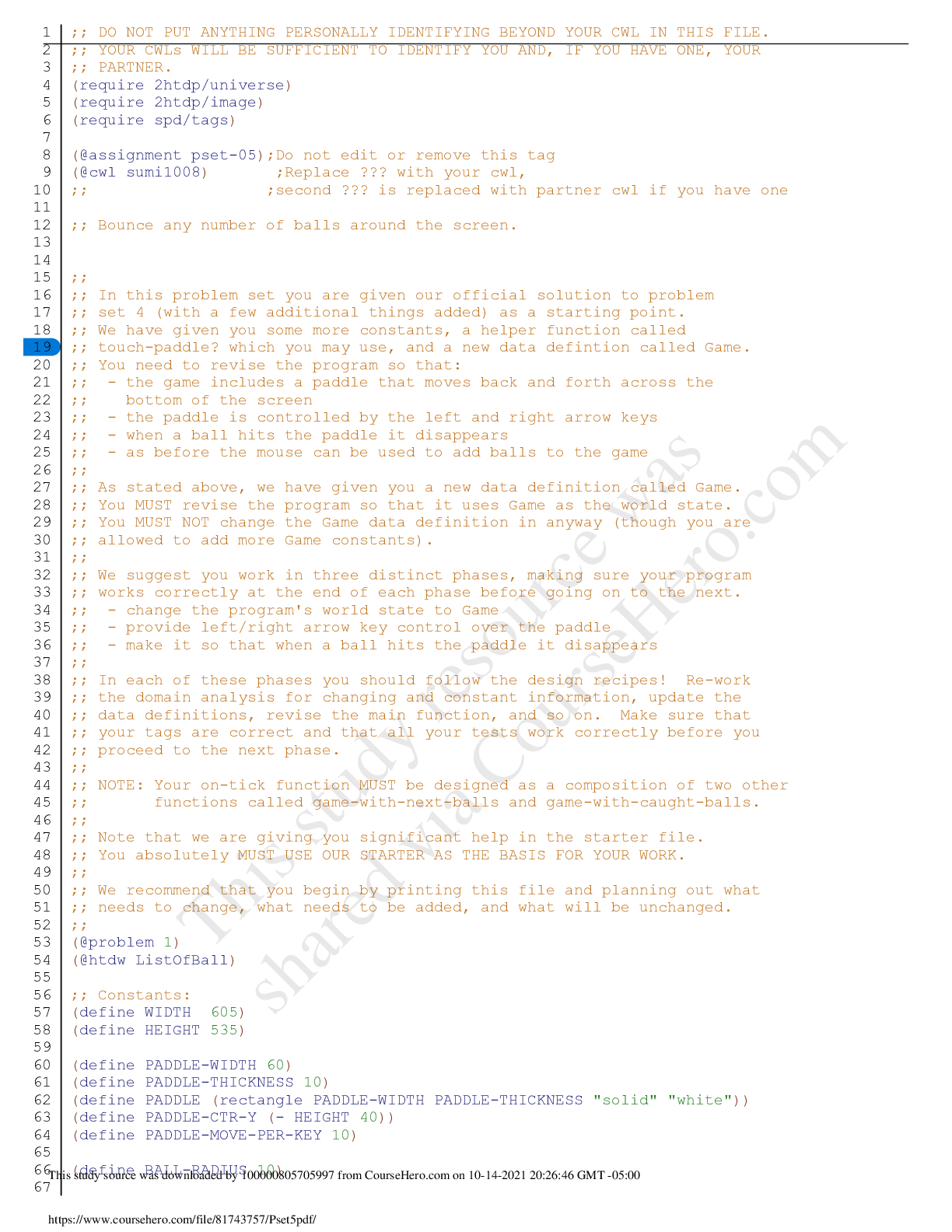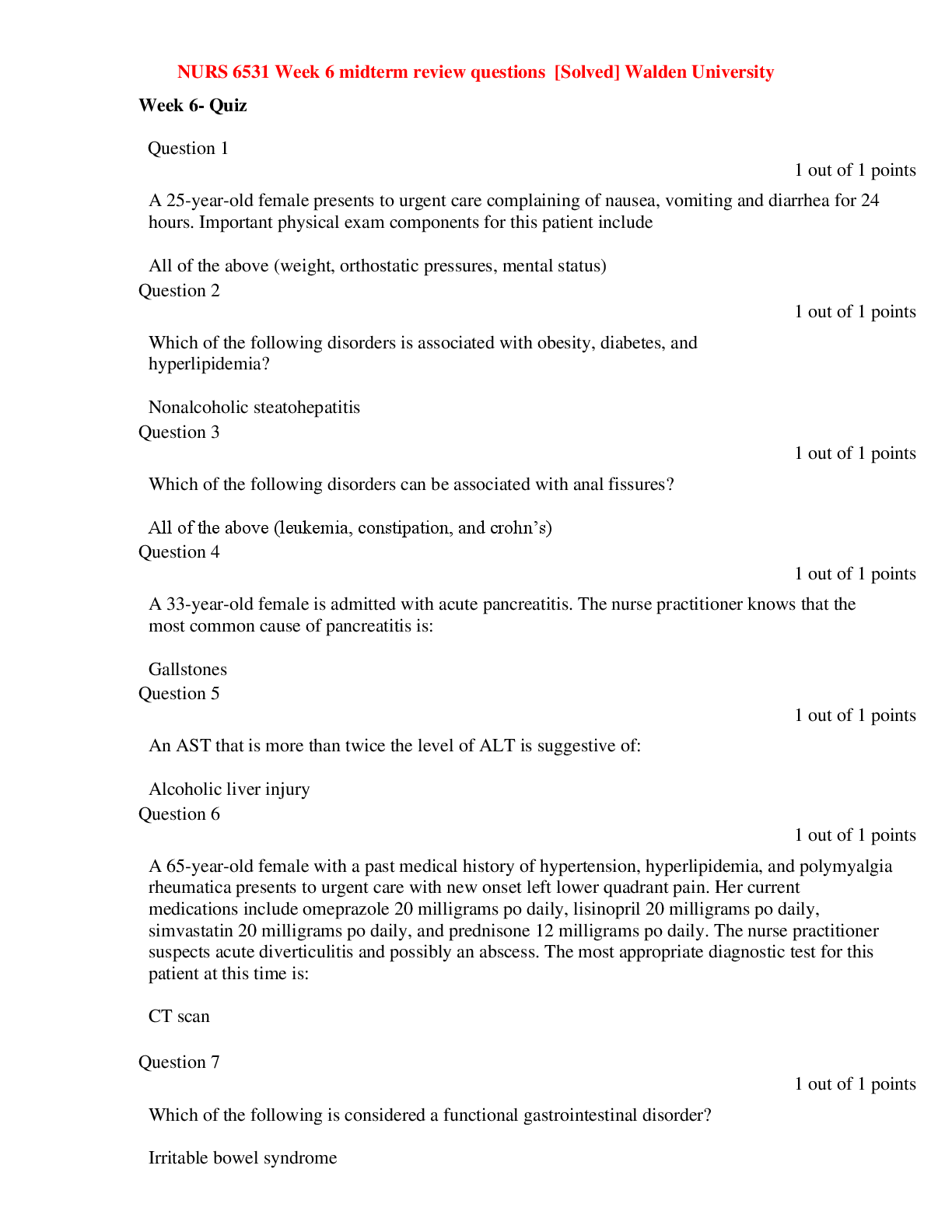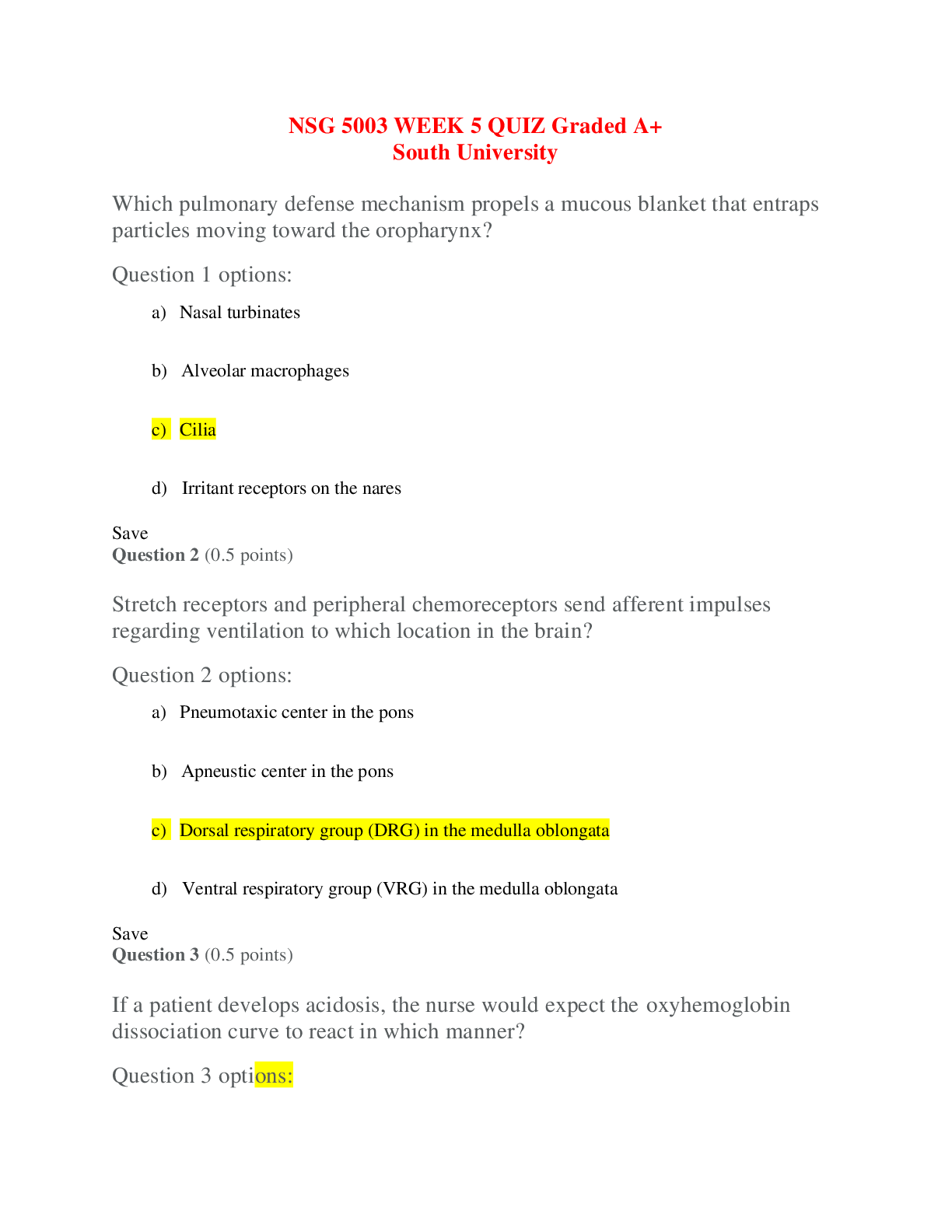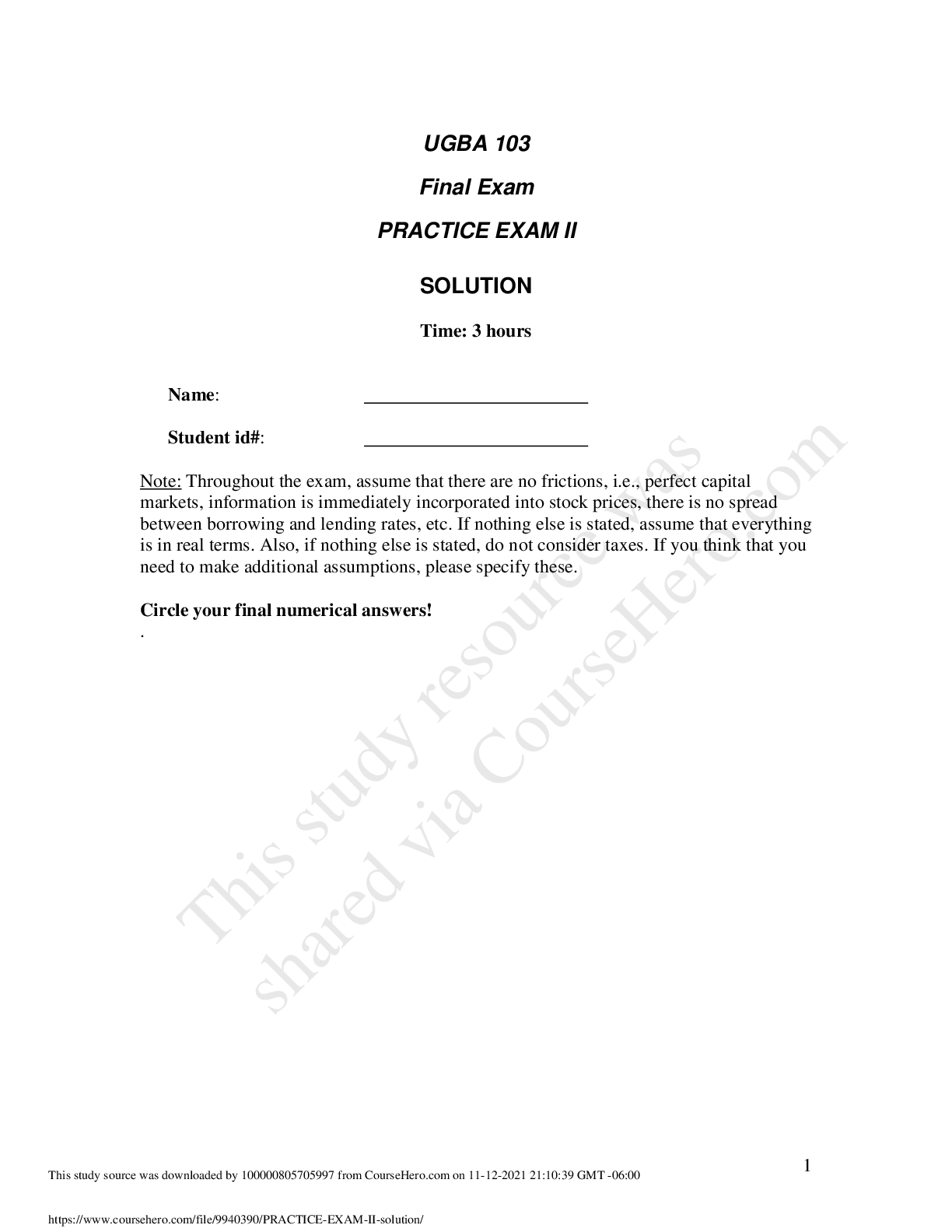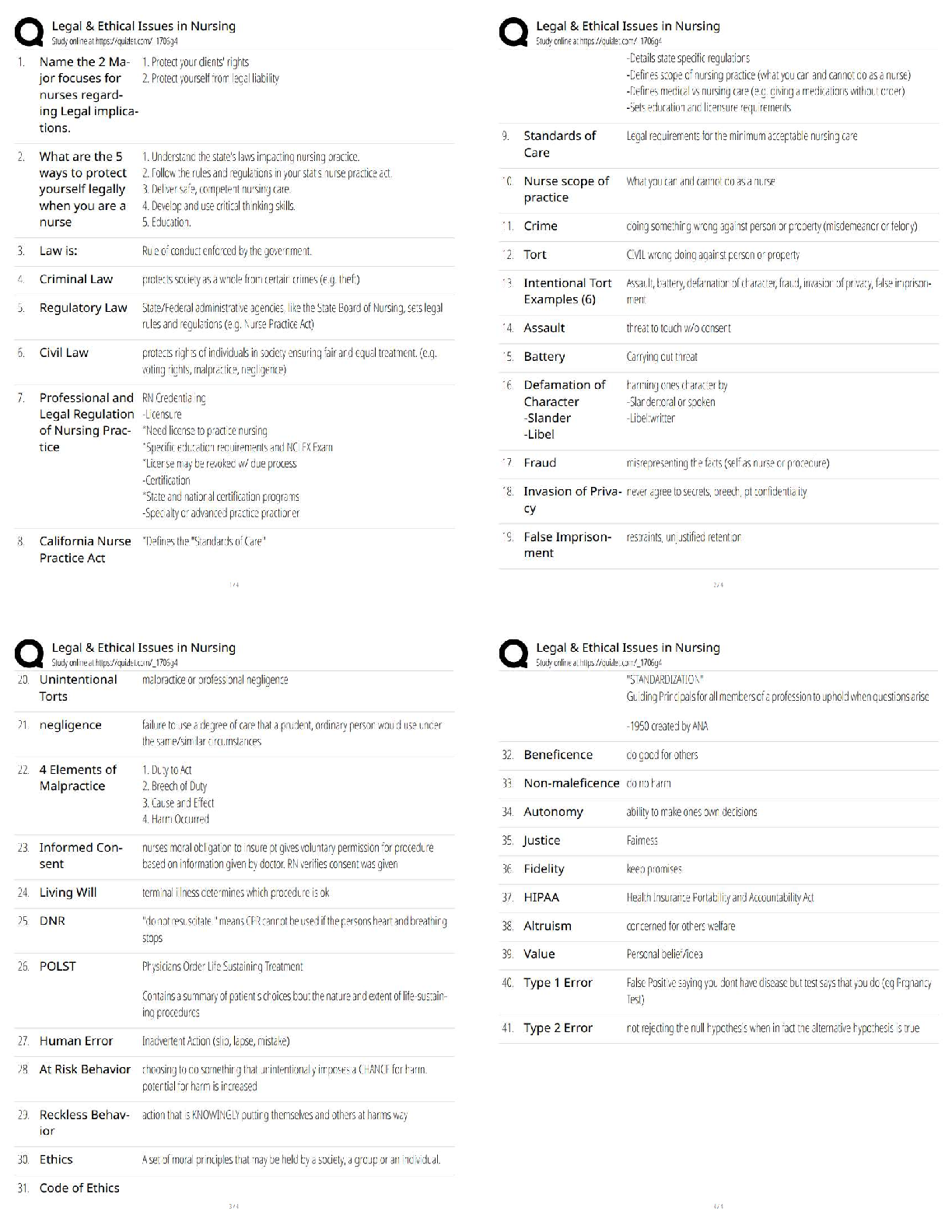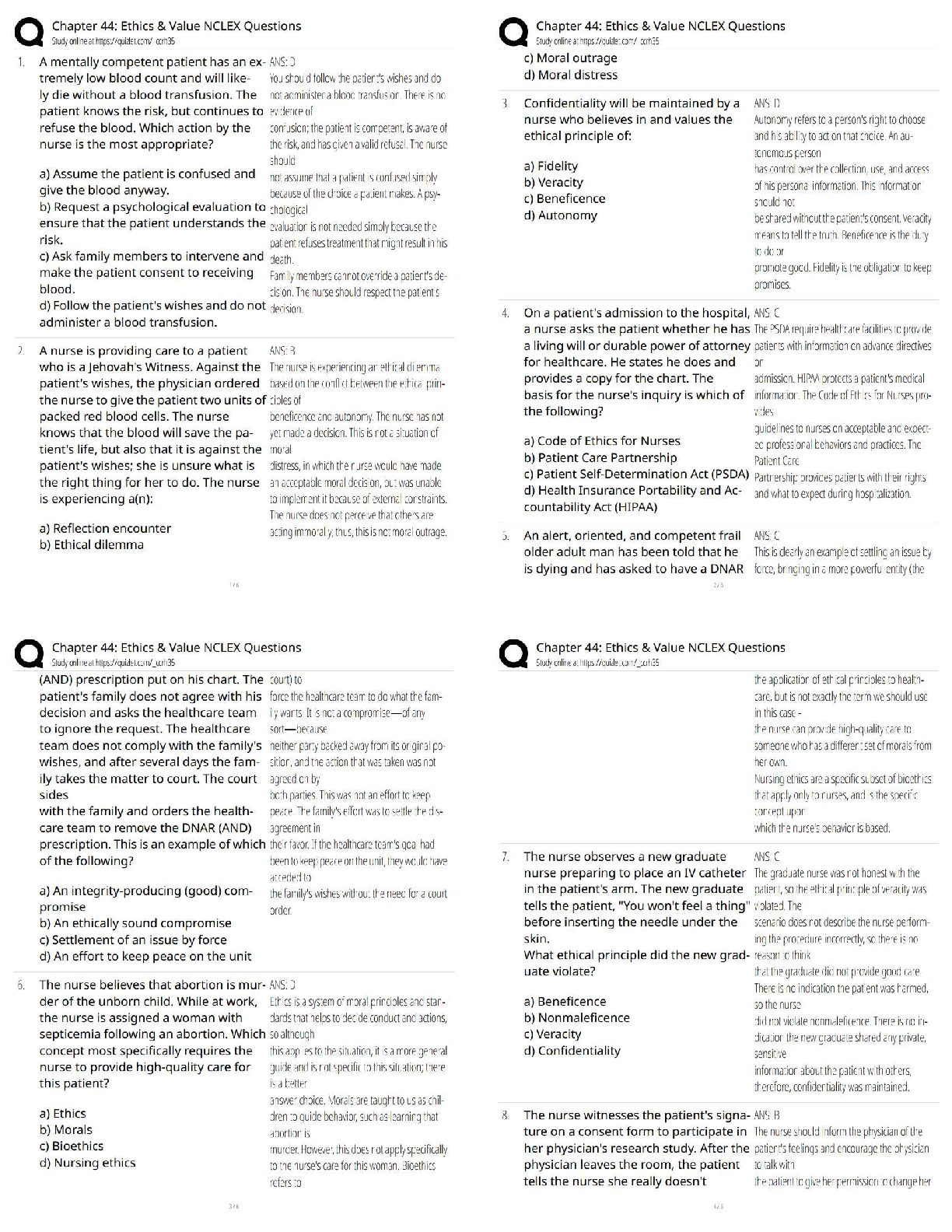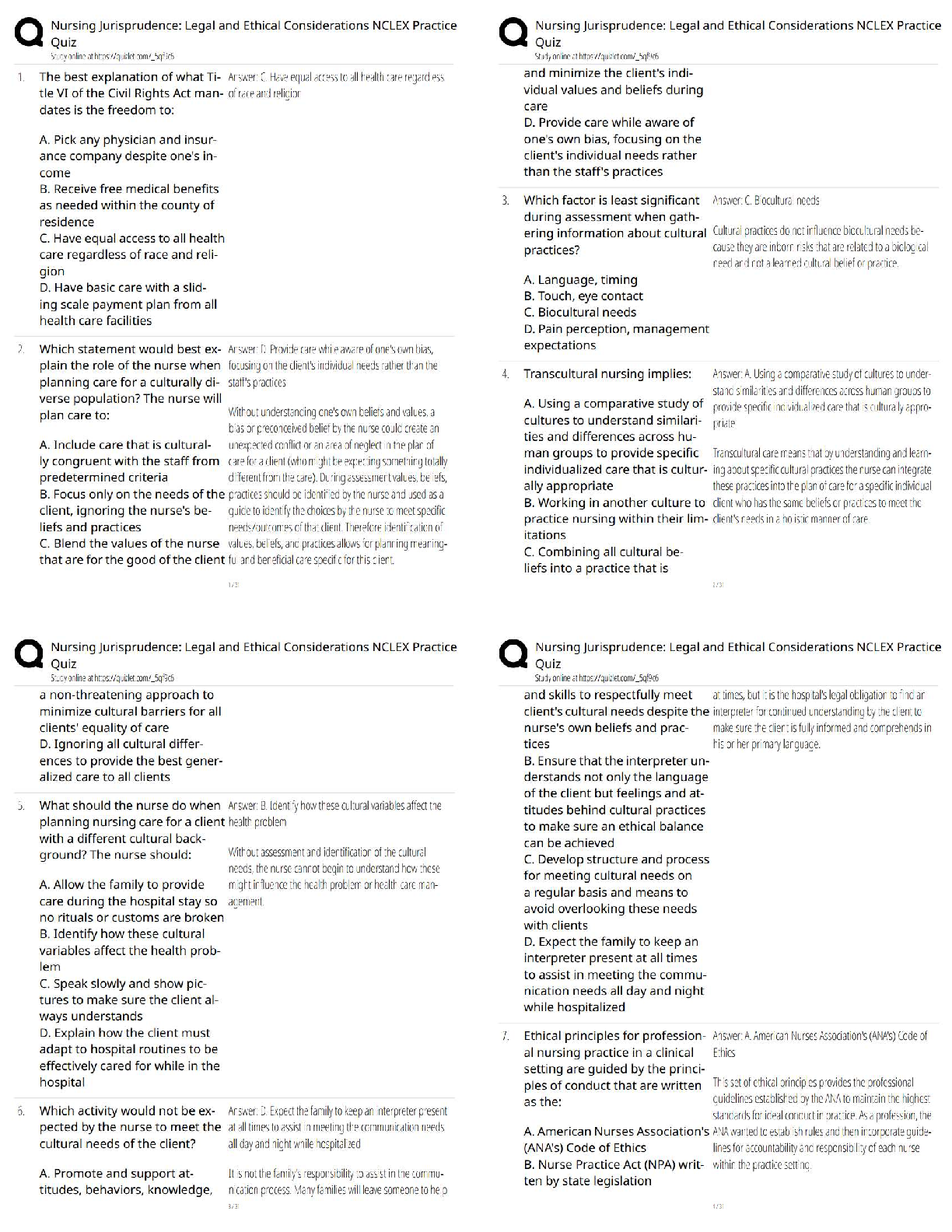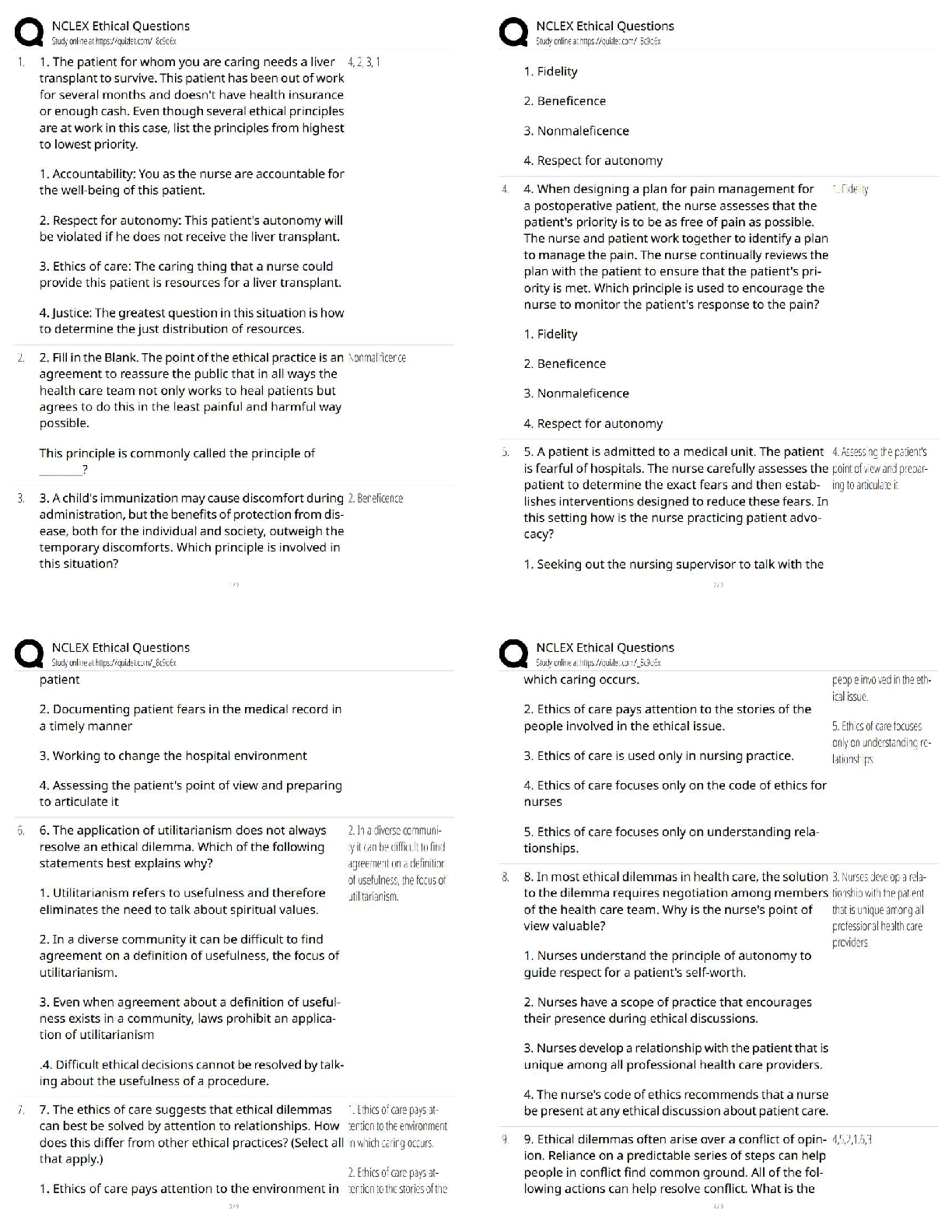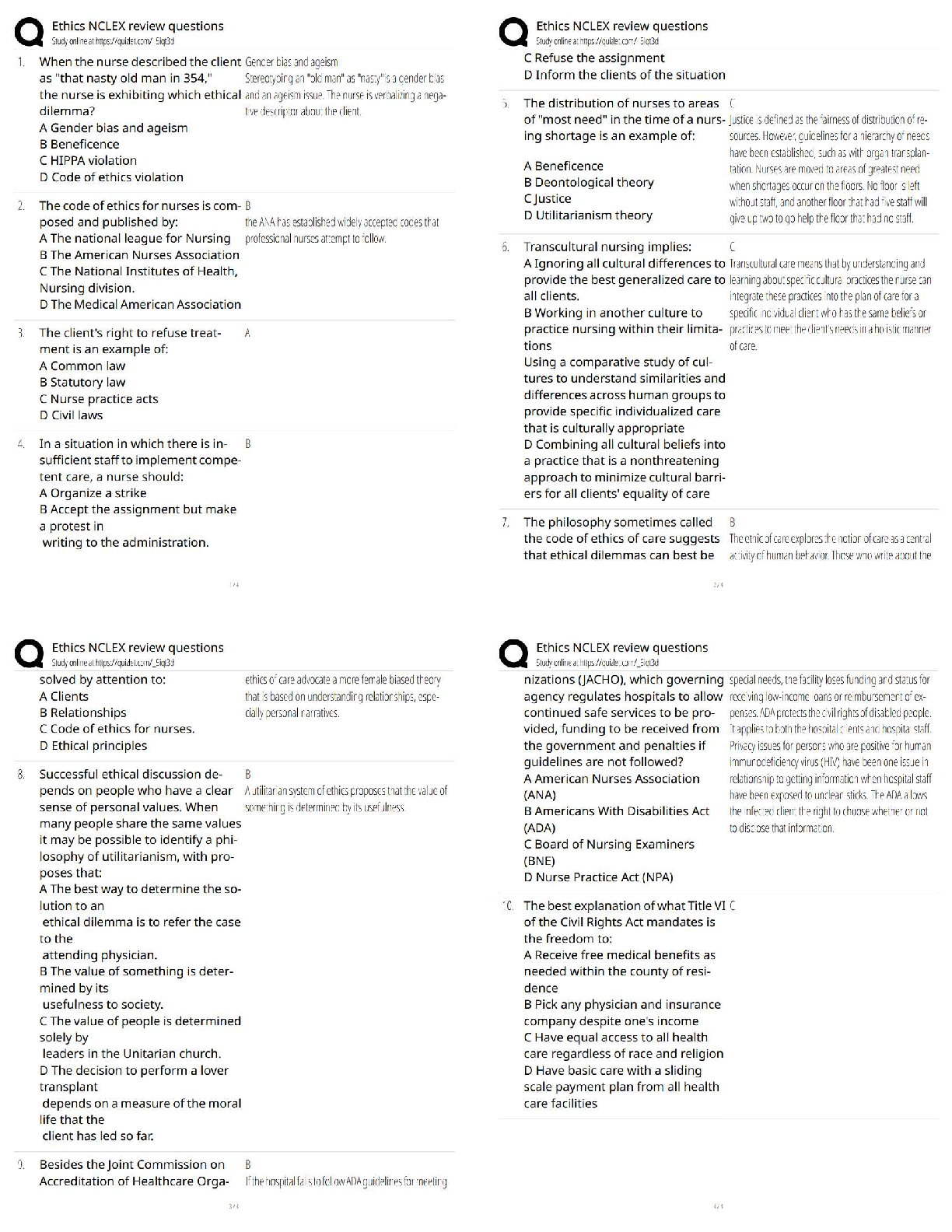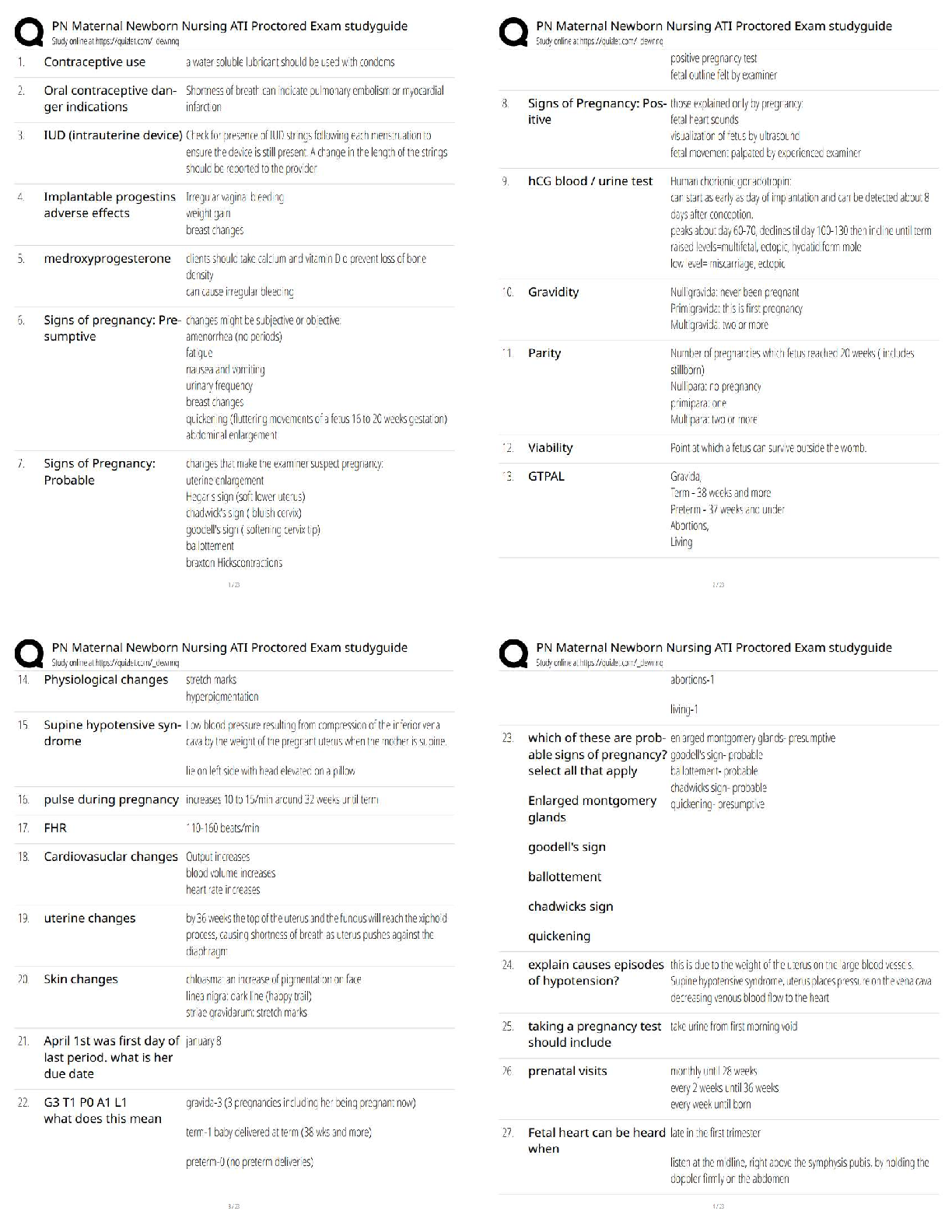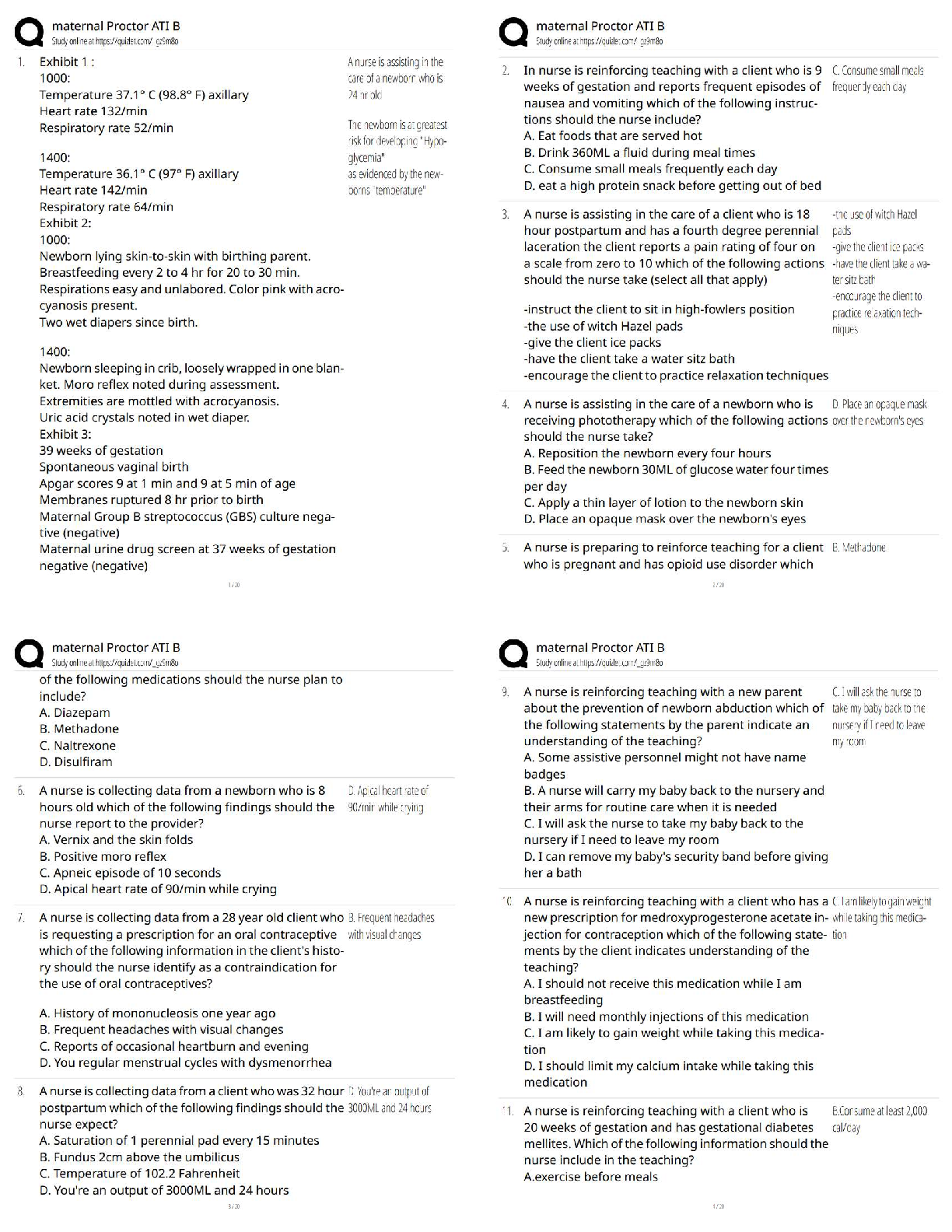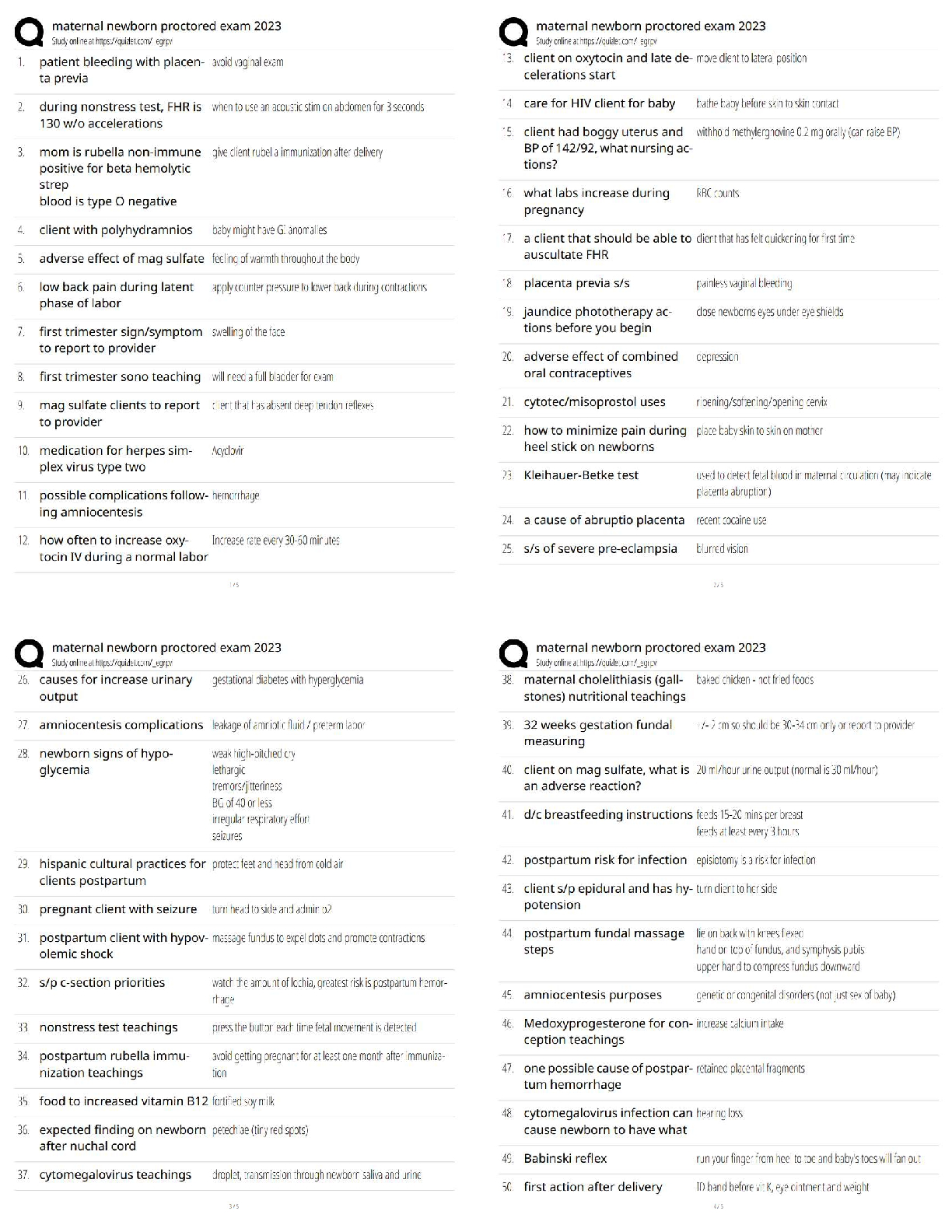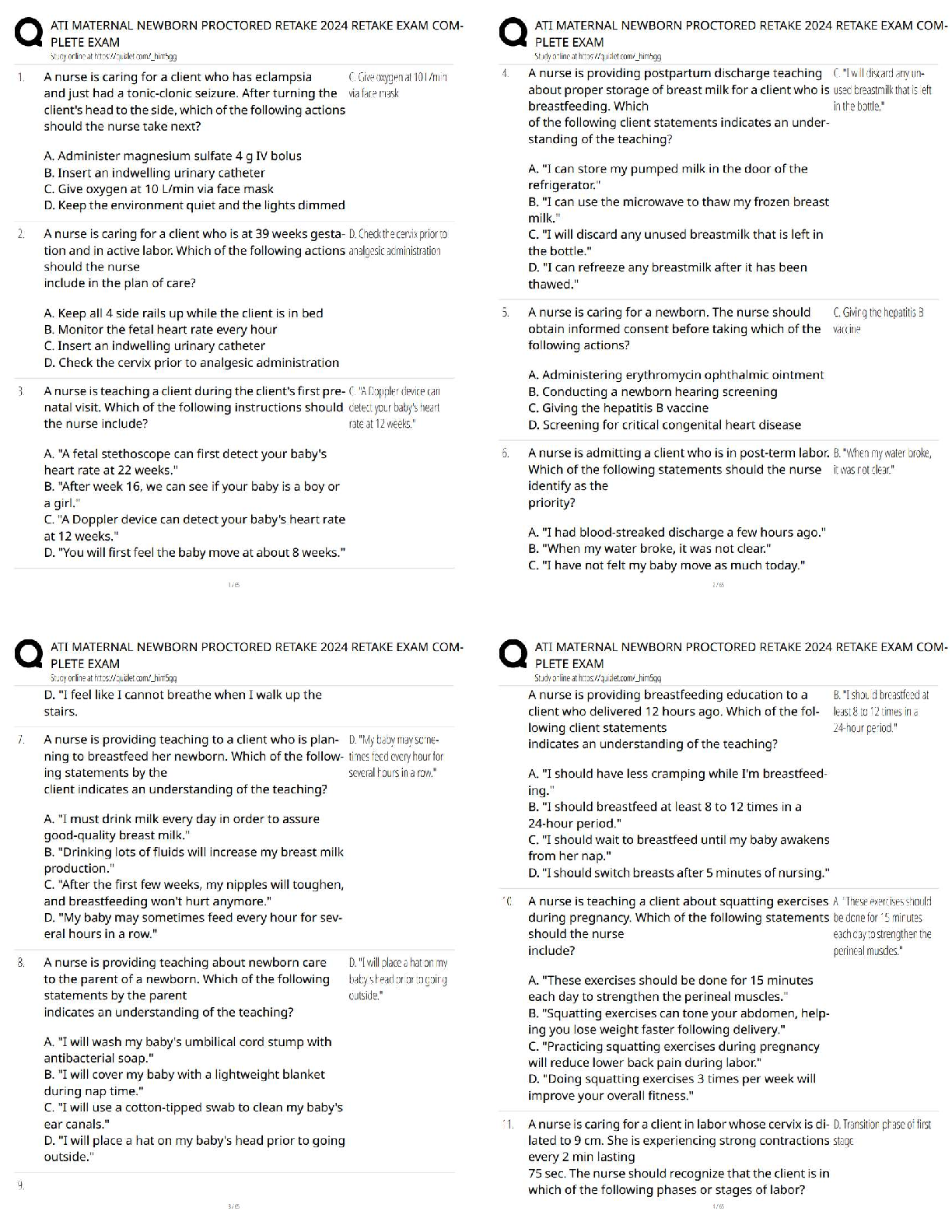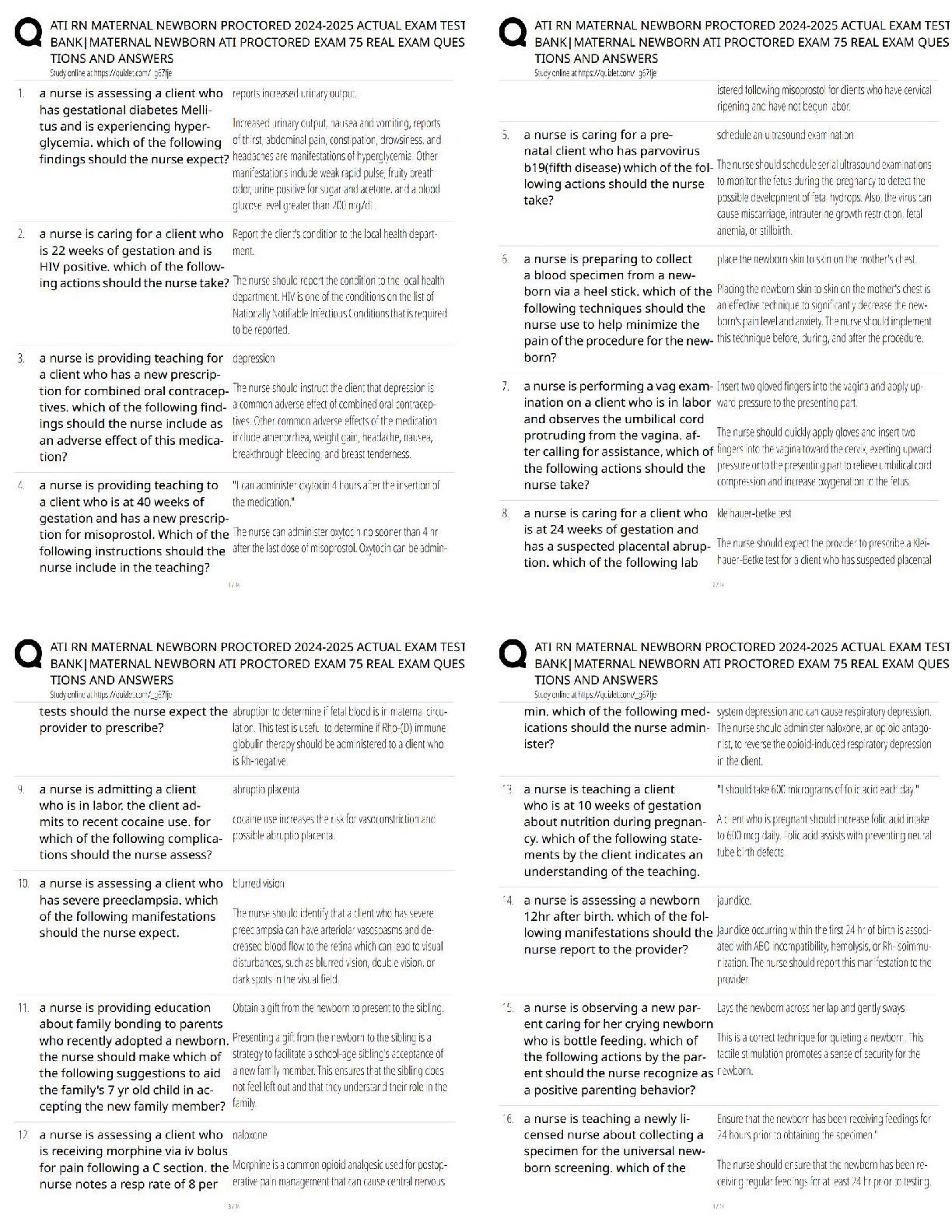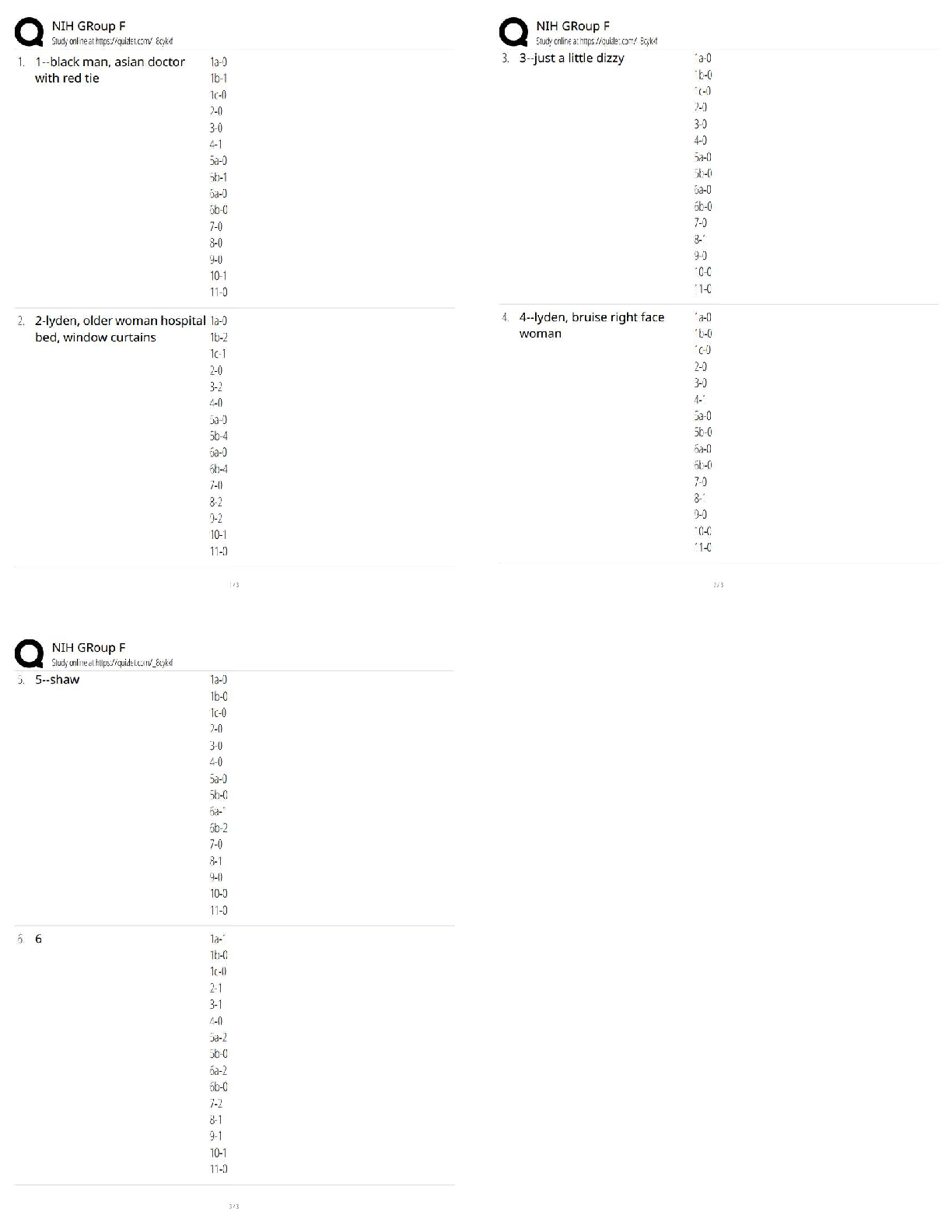Education > QUESTIONS & ANSWERS > [Solved] ECON 101 Final Exam A+ (All)
[Solved] ECON 101 Final Exam A+
Document Content and Description Below
ECON 101 Final Exam A+ Part 1 of 1 - 99.99999 Points Question 1 of 20 4.45 Points The representative firm in a purely competitive industry: A.Will always earn a profit in ... the short run B.May earn either an economic profit or a loss in the long run C.Will always earn an economic profit in the long run D.Will earn an economic profit of zero in the long run Question 2 of 20 4.45 Points An example of a monopolistically competitive industry would be: A.Steel B.Soybeans C.Electricity D.Retail clothing Feedback: See page 275 - 276. Question 3 of 20 4.45 Points Firms in an industry will not earn long-run economic profits if: A.Fixed costs are zero B.The number of firms in the industry is fixed C.There is free entry and exit of firms in the industry D.Production costs for a given level of output are minimized Feedback: See page 240. Question 4 of 20 4.45 Points Marginal product is: A.the increase in total output attributable to the employment of one more worker. B.the increase in total revenue attributable to the employment of one more worker. C.the increase in total cost attributable to the employment of one more worker. D.total product divided by the number of workers employed. Feedback: See page 201. Question 5 of 20 4.45 Points The law of diminishing returns indicates that: A.as extra units of a variable resource are added to a fixed resource, marginal product will decline beyond some point. B.because of economies and diseconomies of scale a competitive firm's long-run average total cost curve will be U-shaped. C.the demand for goods produced by purely competitive industries is downsloping. D.beyond some point the extra utility derived from additional units of a product will yield the consumer smaller and smaller extra amounts of satisfaction. Feedback: See page 204. Question 6 of 20 4.45 Points If average total cost is declining, then: A.marginal cost must be greater than average total cost. B.the average fixed cost curve must lie above the average variable cost curve. C.marginal cost must be less than average total cost. D.total cost must also be declining. Feedback: See page 208. Question 7 of 20 4.45 Points Average fixed costs diminish continuously as output increases. True False Feedback: See page 208. Question 8 of 20 4.45 Points Patents and copyrights were established by the government to reduce oligopoly and monopoly power. True False Feedback: See page 246 - 247. Question 9 of 20 4.45 Points A purely competitive firm is a price maker, but a monopolist is a price taker. True False Feedback: See page 226. Question 10 of 20 4.45 Points The profit-maximizing rule MC = MR is followed by firms under: A.monopolistic competition, but not perfect competition. B.perfect competition, but not monopolistic competition. C.either monopolistic competition or perfect competition, depending on the costs of production. D.both monopolistic competition and perfect competition. Feedback: Great job. See page 277. Question 11 of 20 4.35 Points A perfectly competitive firm will continue producing in the short run as long as it can cover its: A.total cost. B.average total cost. C.average variable cost. D.average fixed cost. Feedback: Great work! See bottom of page 235. Question 12 of 20 4.45 Points A perfectly competitive firm will earn a profit and will continue producing the profit-maximizing quantity of output in the short run if price is: A.greater than marginal cost. B.less than marginal cost. C.less than average variable cost. D.greater than average total cost. Feedback: Great work! See page 233. Question 13 of 20 4.45 Points Monopolistic competition is an industry characterized by: A.a product with many close substitutes. B.a horizontal demand curve. C.a small number of firms. D.barriers to entry and exit. Feedback: Great work. See page 276. Question 14 of 20 4.45 Points If a perfectly competitive firm increases production from 10 units to 11 units, and the market price is $20 per unit, total revenue for 10 units is: A.$10. B.$20 C.$200. D.$210. Feedback: Very good. See page 230. Question 15 of 20 4.45 Points The demand curve facing a monopolist is: A.horizontal, the same as that facing a perfectly competitive firm. B.downward sloping, the same as that facing a perfectly competitive firm. C.upward sloping, the same as that facing a perfectly competitive firm. D.downward sloping, unlike the horizontal demand curve facing a perfectly competitive firm. Feedback: Good work. See page 259. Question 16 of 20 4.45 Points Suppose that a monopolist increases production from 10 units to 11 units. If the market price declines from $30 per unit to $29 per unit, marginal revenue for the eleventh unit is: A.$1. B.$9. C.$19. D.$29. Feedback: Good work. See page 260. Question 17 of 20 4.45 Points Most electric, gas, and water companies are examples of: A.unregulated monopolies. B.natural monopolies. C.restricted-input monopolies. D.sunk-cost monopolies. Feedback: Good job. See page 254. Question 18 of 20 4.45 Points If a perfectly competitive firm is producing a quantity that generates P > MC, then profit: A.is maximized. B.can be increased by increasing the price. C.can be increased by decreasing the price. D.can be increased by increasing production. Feedback: Great work! See page 233. Question 19 of 20 10.0 Points Evaluate the following statement using economic reasoning: "A monopolist can charge whatever she wants because she is the only source available." A monopolist can charge whatever she wants but even monopolist decrease their prices in order to sell more of the product. This is also a great example of why marginal revenue is under the demand curve in a monopolistic market! She can charge whatever she wants in for a while, but the market will inevitably force the constraints of supply and demand. Quickly after this, she will realize that she cannot charge whatever she sees fit. Feedback: See the "Heads-Up!" section on page 263. Question 20 of 20 10.0 Points Identify and describe a real world example of an oligopoly. What characteristics of this market fit the definition of an oligopoly? What role does advertising play in this market? Is this consistent with what you’ve learned about advertising and oligopoly in this course? A great real world example of an oligopoly is the technology/Cell phone industry. Competing companies like Samsung, Apple, and Google, tend to rule the market. The top spot in their industry is revolving and they are all competing for it. “An oligopoly is Situation in which a market is dominated by a few firms, each of which recognizes that its own actions will produce a response from its rivals and that those responses will affect it” (Principles of Microeconomics, 283). Each company is in competition with each other and currently it seems to be cell phone leak season, the most recent Pixel from Google soon the next three companies will slowly leak or announce their new products. The galaxy S8 and the IPhone8 are the newest ones to be released. The key is that they all tend to have a new device entering the market either one right after the other or at the same time. As the products come to market the consumers have to choose either to brand loyalty or switch to the other side or stay with the least expensive option. “Firms in monopoly, monopolistic competition, and oligopoly use advertising when they expect it to increase their profits (Principles of Microeconomics, 290). In this oligopoly advertising, does not play a major role in this perfectly competitive market. "everyone knows that firms in each industry produce identical products, and buyers have complete information about the alternatives available to them in the market" (Principles of Microeconomics, 290). This is consistent with what we've learned about oligopoly and advertising. "Advertising creates consumer loyalty to a particular brand, then that loyalty may serve as a barrier to entry to other firms" (Principles of Microeconomics, 291). Rittenberg&Tregarthen. (2012). Principles of Microeconomics [Show More]
Last updated: 3 years ago
Preview 1 out of 4 pages
![Preview image of [Solved] ECON 101 Final Exam A+ document](https://scholarfriends.com/storage/ECON-101-Final-Exam-A+.png)
Buy this document to get the full access instantly
Instant Download Access after purchase
Buy NowInstant download
We Accept:

Reviews( 0 )
$14.00
Can't find what you want? Try our AI powered Search
Document information
Connected school, study & course
About the document
Uploaded On
Jan 31, 2021
Number of pages
4
Written in
All
Additional information
This document has been written for:
Uploaded
Jan 31, 2021
Downloads
0
Views
136


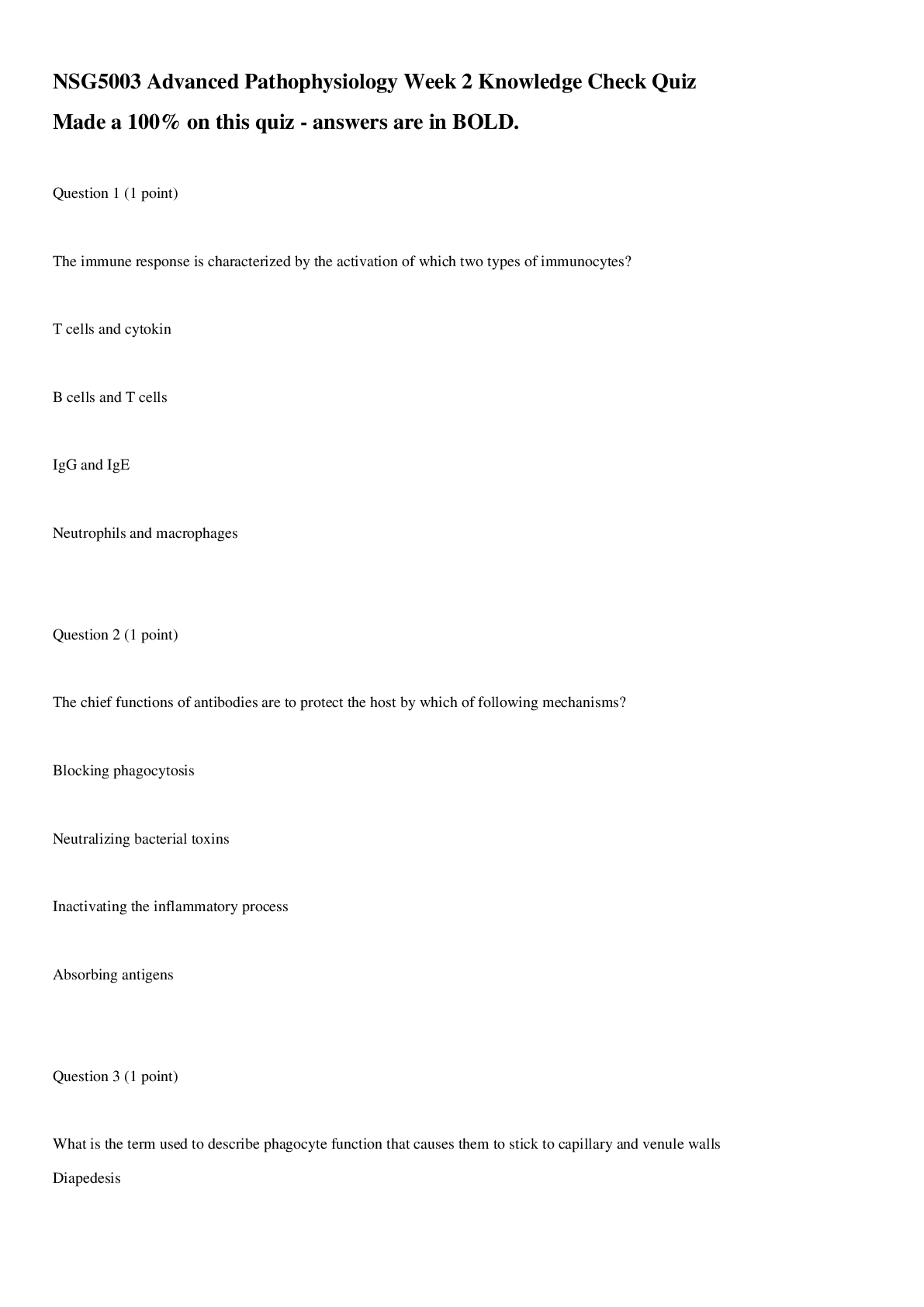
.png)
